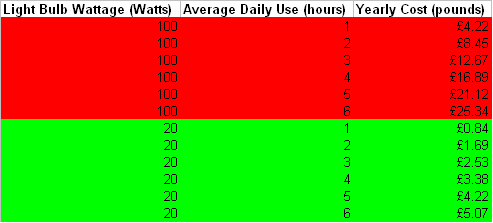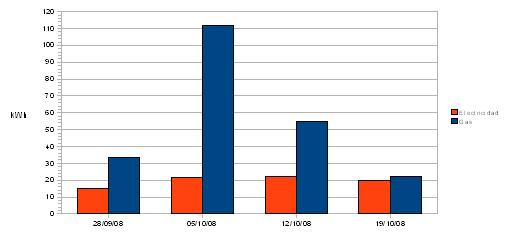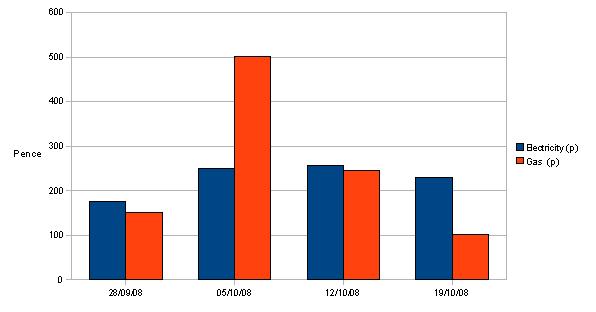The easiest way to cut down electricity is not to use these devices at all. Easier said than done, so the second best thing is to use them less, which again is obvious, but also easier said than done, the last thing that you can do is use devices that are not so power hungry. Do not rush to the shops yet, it might be in your best interest to hang on to your old power hungry appliance, I'll explain below.
I would strongly suggest that you get a plug in electricity meter. I personally use a Brennenstuhl PM 230 Power and Energy Monitor, but there are other models
Television:
This can be one of the main drivers of electricity consumption. I can be quite smug here as I don't own a television, which enables me to save not only loads on electricity but £140 pounds a year on TV license fees. Enough of my smugness.
I do however have a 20" monitor. This uses 70-90W, depending on brightness and the amount of white displayed on the screen.
It's hard to do an apples to apples comparisons of TV technologies, but the image below can be taken as an average guide of what each type of technology uses and how much it would cost you yearly to run it (1 kWh @ 11.57p). I don't have exact model numbers for the TVs used, so I won't post them. The plasma TV was measured by a friend with a different power meter.

I can hear you say how the screen sizes are not the same, that is true but nigh on impossible to find a CRT that is 42".
While it is possible to calculate an average power usage per square cm, this can be misleading as there isn't a linear scaling.
The same friend that measured the plasma TV, also measured his 5.1 surround system that uses a whooping 130 W, which means that it uses the same amount of power as a 32" CRT TV.
Perhaps the most important figure is the stand by figure, which unfortunately I only have for the plasma TV, 30 W. While this might not sound like much, if you leave it on standby for 20 hours and use it for 4 every day you are looking at £76 of electricity in total, 25 of those pounds for the TV to be warming up air.
You might have heard many times on the media how you should not leave appliances in standby, I've just given you 25 reasons not to, unless you've got shares in your utility company.
There are also digital tuners and DVD/Blu-Ray Players. Unfortunately I don't have data for these. Sony quotes 8w for its DVP-NS39 model (dvd player) and 26 W for its BDP-S350 Blu-ray (Blu-Ray player). Standby figures are below 1W.
Humax quotes 10W in use, 5W in standy by for its F2-FOXT set top box (freeview digital tuner)
As you can see it pretty soon adds up, with a maximum power of 440W for watching freeview, 438 W watching DVDs and 456 W watching Blu-Ray discs on the plasma TV. While you are unlikely to watch 4 hours daily of blu-ray discs, it is not outrageous to think that you will use your 5.1 surround system while watching telly, were you to do this, you are looking at an extra £22, which brings your maximum consumption up to £98 and this is only to watch television.
A word of warning to people thinking about using a PS3 as a blu-ray player. The PS3 uses around 170 W, which is incidentally about as much power as it uses while idling PS3. Leave your PS3 idling 24/7 and you are looking at a whopping £172 a year, but I am getting ahead of myself



